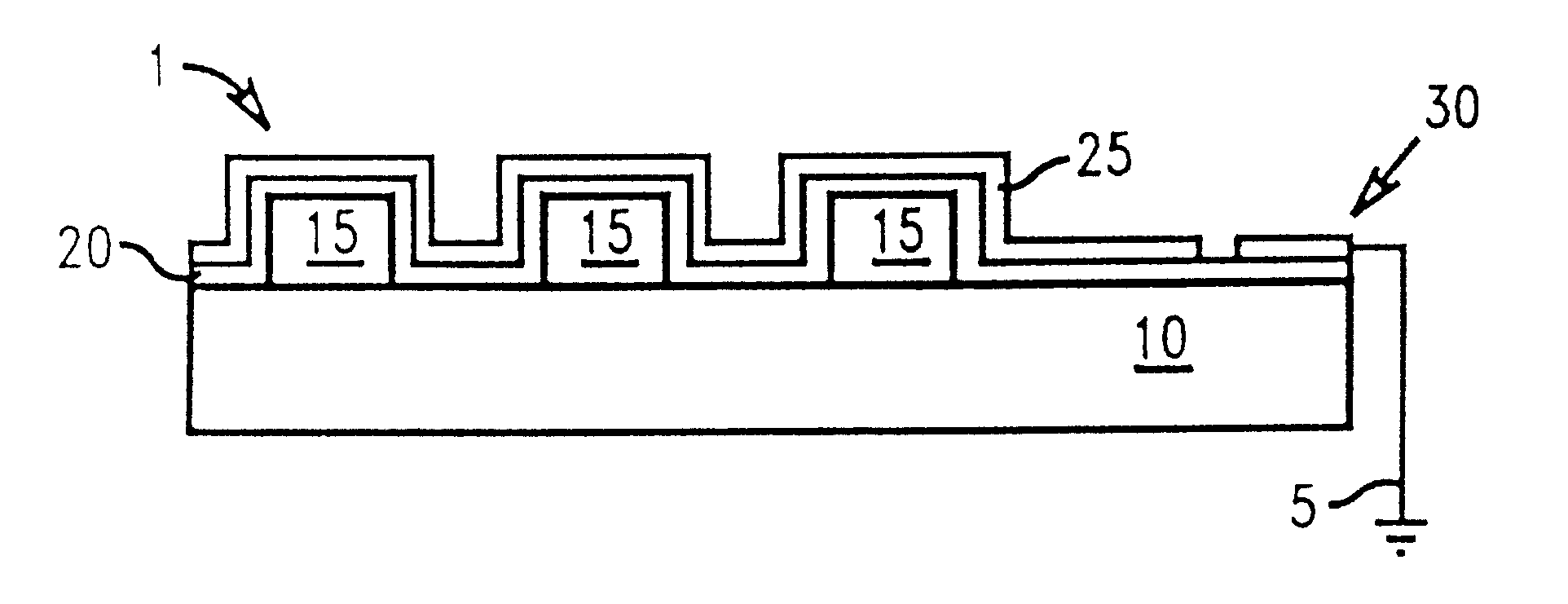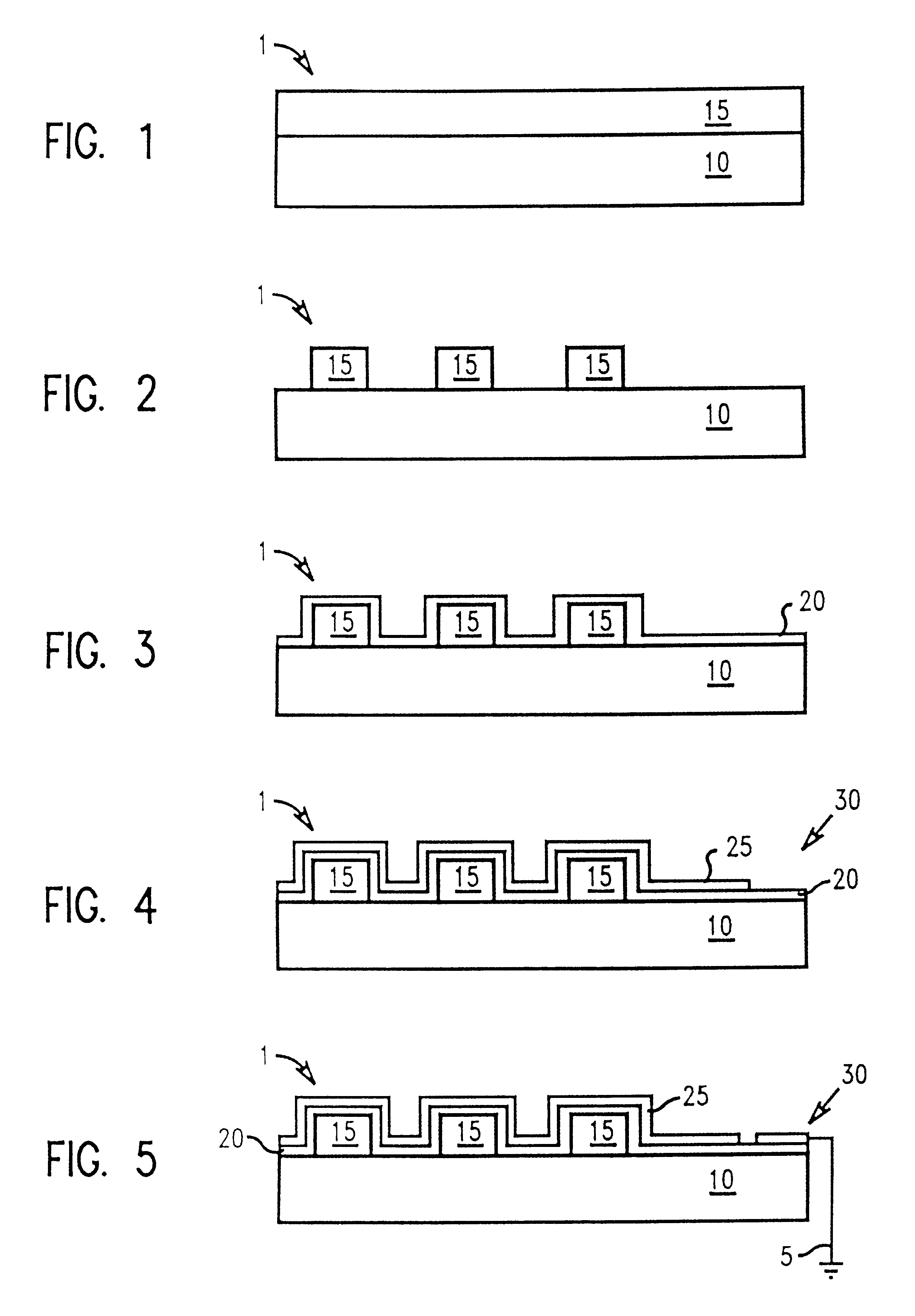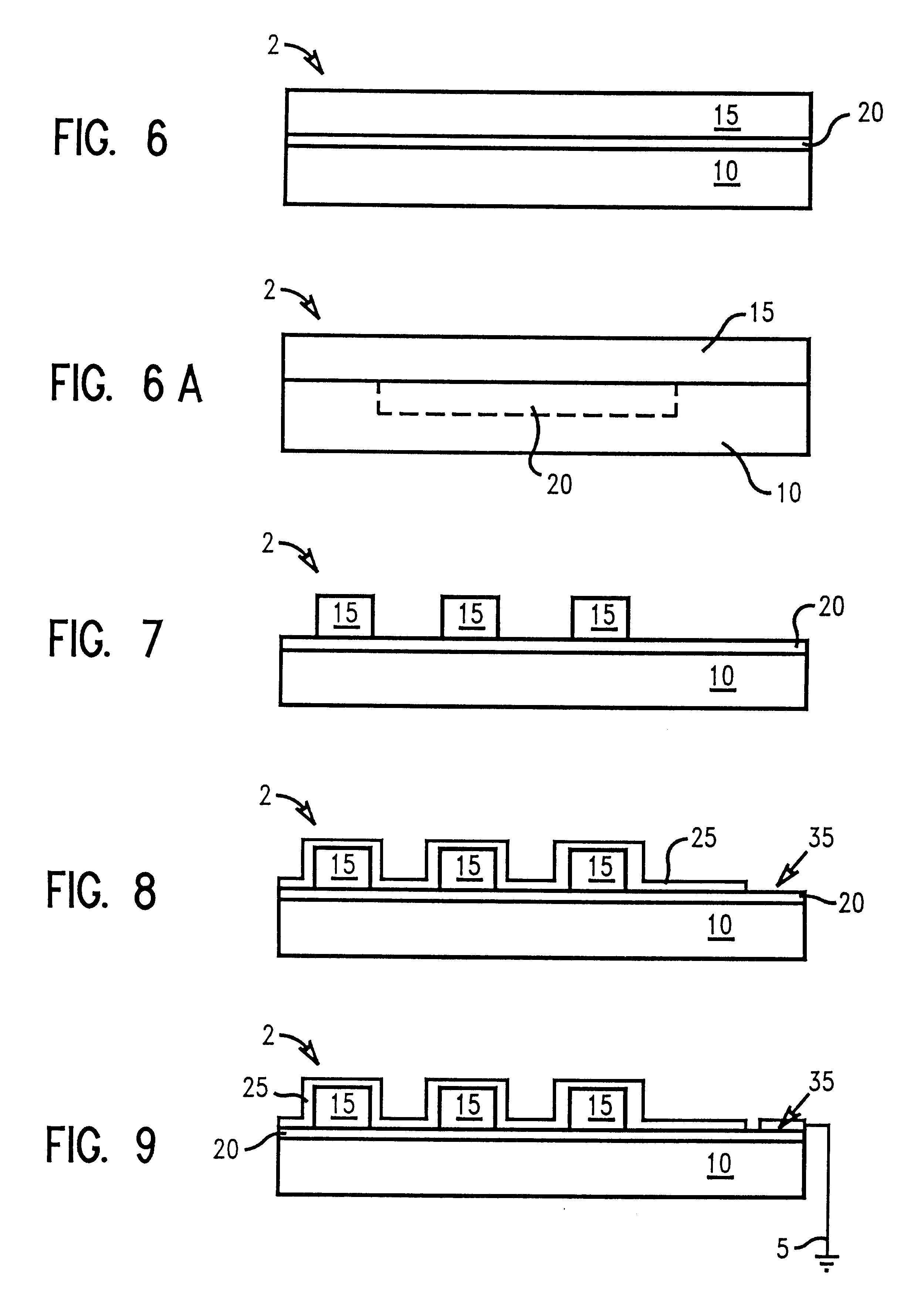Static resistant reticle
a technology of static resistance and reticle, which is applied in the field of static resistance reticle and reticle, can solve the problems of increasing the cost per wafer, slowing down production, damage to objects, etc., and achieves the effect of reducing esd and optimizing transmission
- Summary
- Abstract
- Description
- Claims
- Application Information
AI Technical Summary
Benefits of technology
Problems solved by technology
Method used
Image
Examples
Embodiment Construction
)
In describing the preferred embodiment of the present invention, reference will be made herein to FIGS. 1-10 of the drawings in which like numerals refer to like features of the invention. Features of the invention are not necessarily shown to scale in the drawings.
Generally, the present invention provides an anti-reflective coating (ARC) which enhances transmission of light and reduces ESD during photolithography. The ARC may comprise of at least two dielectric layers, each layer having different refractive indices selected to optimize transmission of light, disposed on an optically transparent substrate comprising glass, soda lime glass, quartz or sapphire. The layers comprising the ARC may comprise cermet material, a semi-synthetic material consisting of a mixture of ceramic and metallic components, e.g., metal carbides, borides, oxides and silicides. For example, a cermet such as alumina (Al.sub.2 O.sub.3) has small inclusions comprising grains of aluminum which further reduce ...
PUM
 Login to View More
Login to View More Abstract
Description
Claims
Application Information
 Login to View More
Login to View More - R&D
- Intellectual Property
- Life Sciences
- Materials
- Tech Scout
- Unparalleled Data Quality
- Higher Quality Content
- 60% Fewer Hallucinations
Browse by: Latest US Patents, China's latest patents, Technical Efficacy Thesaurus, Application Domain, Technology Topic, Popular Technical Reports.
© 2025 PatSnap. All rights reserved.Legal|Privacy policy|Modern Slavery Act Transparency Statement|Sitemap|About US| Contact US: help@patsnap.com



